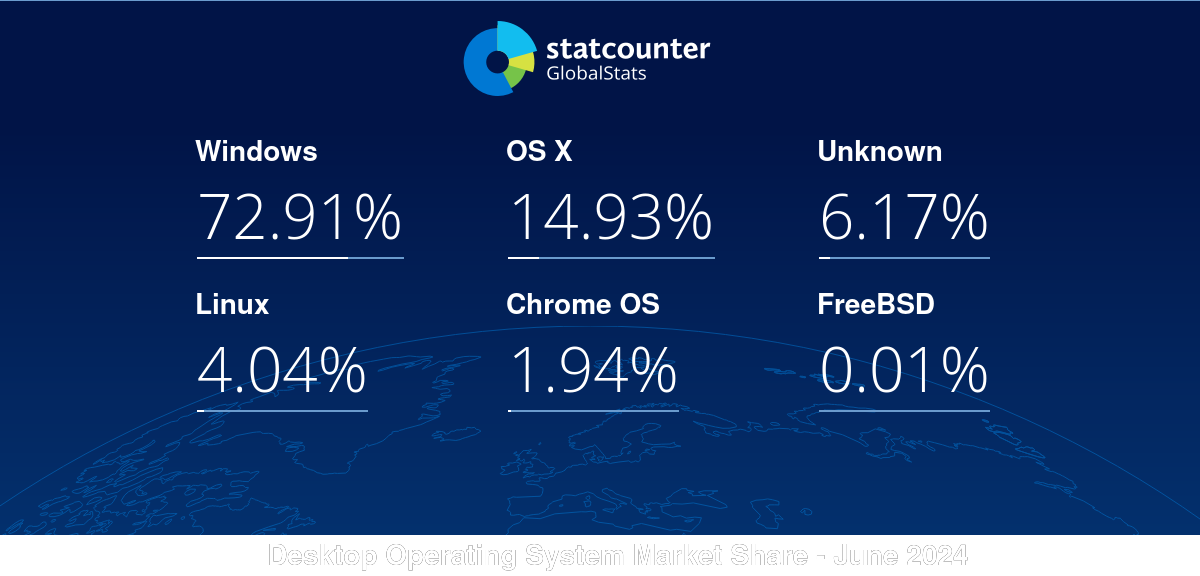It peaked at 4.05% in March. The last 2 months it went just below 4% as the Unknown category increased. For June the reverse happened, so 4.04% seems to be the real current share of Linux on Desktop as desktop clients were read properly/werent spoofed.



I’ve seen a lot of people move to Mint or Pop_OS or Kubuntu. They’re Debian based so updates are pretty stable.
I personally ended up with EndeavourOS using the KDE desktop environment. I have a steam deck, so this felt very similar to me. This is Arch based so sometimes updates break things, but I’ve had more success here.
Also remember that no distro is problem-free, but neither was Windows. The longer you commit, the easier it gets.
EDIT: If you’re hesitant to fully commit at first, I also recommend dual booting with Windows. Over time you’ll use it less and less until one day you feel like reclaiming the disk space.
I have a 10 year old laptop that I had to get rid of the hard drive for and am installing an nand drive and want to use to re-familiarize myself with Linux on it. Especially since my main desktops are too old to upgrade to Windows 11(not that I’d want to anyway) and I figure going Linux now will save me from scrambling when the pooch gets thoroughly screwed after Win 10 updates end.
I tried doing a dual boot to Mint awhile back, I did the mint backup at the start like it suggests, changed some things, broke it, restored from the backup thinking it was great id already made one, and broke the WHOLE pc.
I had to pull the battery on the BIOS to get it to go beyond a black screen when turning on.
It was terrible.
It seem to recall at the time recommendations about not doing dual boot, and if you wanted to dual boot, remove the main OS drive when you install Linux. Then put it back in.